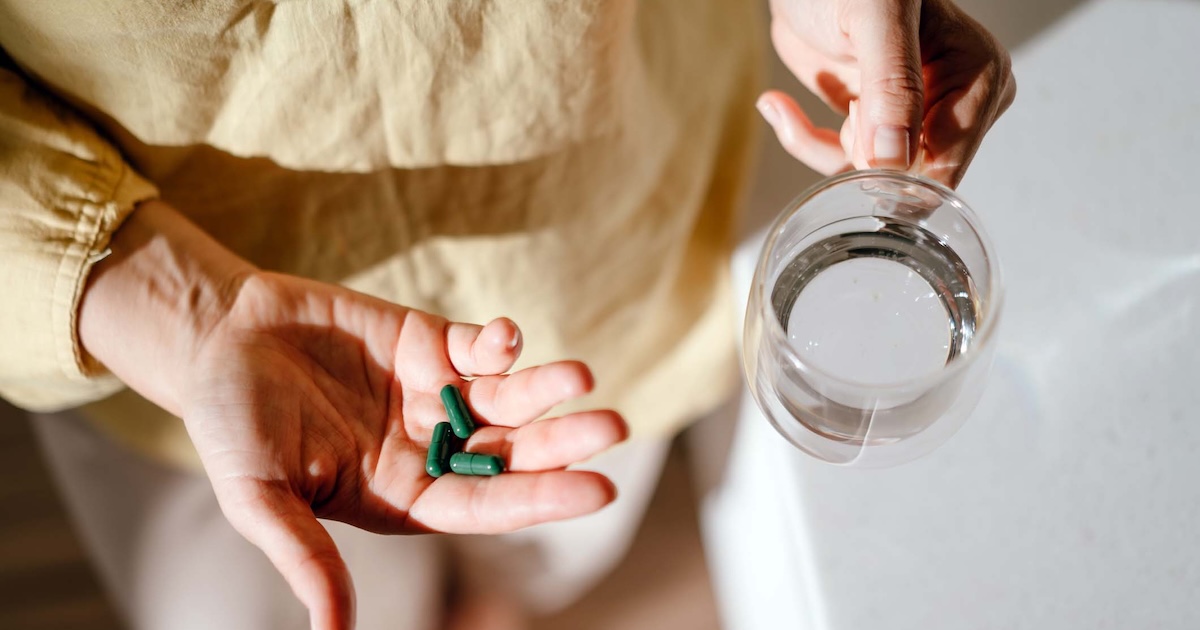 Google made big news recently when it announced Google Calico, a new venture that would apply "some longer term, moonshot thinking around healthcare and biotechnology," putting the minds at Google toward the problems of aging and illness.
Google made big news recently when it announced Google Calico, a new venture that would apply "some longer term, moonshot thinking around healthcare and biotechnology," putting the minds at Google toward the problems of aging and illness.
Calico is far from Google's first venture into health or wellness, however. The company's (ultimately failed) PHR venture Google Health was one high profile example, as were 3D anatomy-viewer Google Body and Google Flu Trends. The company has always had a background participation in activity tracking, debuting an Android app called MyTracks in 2009, and incorporating passive activity tracking into first Google Now and then the Android OS in general. And perhaps most importantly, Google has introduced health-related features into its original core offering: search. As well it should, since Pew data indicates that eight in 10 health inquiries start at a search engine like Google.
During the recent Healthcare.gov debacle, Google has been evoked more than once. Donald Trump said the tech giant should have run the site from the beginning and the federal government brought in Michael Dickerson, a site reliability engineer at Google, to help address some of the glitches in the health insurance exchange.
From 2006 to 2012, most of Google's health initiatives fell under the jurisdiction of Dr. Roni Zeiger, Google's Chief Health Strategist. Zeiger has since left Google to launch startup Smart Patients, and, based on an email Google sent MobiHealthNews it seems that Google did not fill the position of Chief Health Strategist after he left. Even without a single health guru at the helm, the company continues to offer health-related services. Here's an overview of Google's health-related products, services, and ventures over the years.
Health functions of Google Search (2009-present)
At various times since 2009, Google has updated its search features to be more friendly to health-related searches. In November 2010, Google wrote a blog post officially introducing special search results for people using Google in an emergency situation.
"We know that in times of crisis, it's especially important for you to find the crucial information you're looking for—and find it fast," Zeiger wrote at the time. "Today, in 13 countries, we’ll begin displaying some combination of special search results for searches around poison control, suicide and common emergency numbers that point to emergency information."
In fact, Google had rolled out special search results -- a large, prominently displayed phone number -- for poison- and suicide-related searches as early as the fall of 2009. The company added special results for emergency-related terms in various languages as well.

In February 2012, Google changed how search worked for people who seemed to be searching for information about medical symptoms, displaying a short list of related conditions.
"The list is generated by our algorithms that analyze data from pages across the web and surface the health conditions that appear to be related to your search," Zeiger wrote in a blog post at the time. This search protocol has been modified somewhat since then. It now displays the message "Consult a doctor if you have a medical concern" in response to symptom searches.

In November 2012, Google added medication concerns to its roster of special searches. This time Adam Brown, the former Google Health product manager and now product manager for search wrote the blog post for the feature, part of Google's Knowledge Graph.
"We get a lot of queries for medicine on Google. So to make it quick and easy for you to learn about medications, we’ll start showing key facts -- side effects, related medications, links to in-depth resources, and more -- right on the search results page," he wrote. Medication searches also display the "Consult a doctor" disclaimer.

The most recent health-related change to search was nutrition-related. Starting in May of this year, Google search can answer questions about the nutritional content of food, even making connections between foods with unlike-sounding names like summer squash and zucchini.

Google Health (2008-2011)
 Google started working on a personal health record system in late 2006 or early 2007, with future Keas founder Adam Bosworth originally at the helm. Google Health formally launched in 2008, under Zeiger, after a two-month pilot with the Cleveland Clinic. The goal was to create a centralized location for an individual's health information that they could easily share with healthcare providers, insurers, or anyone else they chose. Google announced the shutdown of Google Health in 2011, with full functionality ending January 1, 2012. User data was available to be uploaded for an additional year.
Google started working on a personal health record system in late 2006 or early 2007, with future Keas founder Adam Bosworth originally at the helm. Google Health formally launched in 2008, under Zeiger, after a two-month pilot with the Cleveland Clinic. The goal was to create a centralized location for an individual's health information that they could easily share with healthcare providers, insurers, or anyone else they chose. Google announced the shutdown of Google Health in 2011, with full functionality ending January 1, 2012. User data was available to be uploaded for an additional year.
As to why Google Health shut down, Google said it couldn't make the adoption scale beyond quantified self enthusiasts and early adopters.
"There has been adoption among certain groups of users like tech-savvy patients and their caregivers, and more recently fitness and wellness enthusiasts," product manager Brown wrote at the time, "but we haven’t found a way to translate that limited usage into widespread adoption in the daily health routines of millions of people."
Google Health continues to be evoked in discussions of PHRs, which are still struggling to catch on in the mainstream. MobiHealthNews's Brian Dolan also tackled the question of why Google Health failed in a 2011 post-mortem, rounding up 10 possible reasons from digital health thinkers.
Google Flu Trends (2008-present)
 Google Flu Trends is a prime example of big data in health care. Launched in November 2008, Google Flu Trends uses de-identified, aggregated search data related to the flu to map where and when outbreaks are occurring. The US Centers for Disease Control and Prevention tracks the flu also, by having doctors and patients at certain hospitals and clinics send information to the CDC. But using search data, Google is able to track flu trends more quickly and fairly accurately: Shortly after Flu Trends launched it predicted a spike in flu cases two weeks before the CDC did.
Google Flu Trends is a prime example of big data in health care. Launched in November 2008, Google Flu Trends uses de-identified, aggregated search data related to the flu to map where and when outbreaks are occurring. The US Centers for Disease Control and Prevention tracks the flu also, by having doctors and patients at certain hospitals and clinics send information to the CDC. But using search data, Google is able to track flu trends more quickly and fairly accurately: Shortly after Flu Trends launched it predicted a spike in flu cases two weeks before the CDC did.
In the wake of the success of Flu Trends, Google turned its attention to another disease as well, creating Google Dengue Trends to track Dengue Fever in Bolivia, Brazil, India, Indonesia and Singapore. Dengue trends launched in May 2011.
At the beginning of this year, however, Google Flu Trends became something of a poster child for big data gone bad. After years of matching the CDC data closely, Google reported twice the number of outbreaks at the end of 2012 as the CDC did. Although Google never explained the glitch, experts speculated that increased media coverage of the flu introduced false positives into the search data.
"Several researchers suggest that the problems may be due to widespread media coverage of this year’s severe US flu season, including the declaration of a public-health emergency by New York state last month," Nature magazine reported. "The press reports may have triggered many flu-related searches by people who were not ill."
Despite the hiccup, Google Flu Trends remains one of Google's most high-profile health initiatives.
Google MyTracks and other tracking efforts (2009-present)
Google MyTracks launched in 2009 as an Android app that could track a user's movement on Google Maps using a phone's GPS. Shortly thereafter, in 2010, Google made the app open-source. Now MyTracks, one of Google's top free health and fitness apps, can track a user's path, speed, distance, and elevation for walking, running, or biking. While recording, a user can view data live, annotate his or her path, or hear audio updates on his or her progress. It syncs with heart rate monitors from Zephyr and Polar. It also integrates with other Google products, allowing users to view their data in Google Maps, Google Fusion Tables and Google Docs.
MyTracks is not Google's only venture into activity tracking. In late 2012, Google quietly added activity tracking to Google Now, an Android-only app that uses Google services to smartly deliver users various kinds of information to help them throughout their day – without them having to ask. The feature delivers a monthly activity report of time spent walking or cycling, measured passively by the phone itself, and displays it alongside the previous month’s data for comparison.
Finally, possibly as a response to Apple's M7 co-processor, Google added a low-power background step counter to the latest version of the Android operating system just this month.
Google Body (2010-2012)
 Google Body, originally called Google Body Browser, launched at the end of 2010. Google Body was a 3D model of a human body users could peel back, zoom in on, and explore, similarly to how Google Earth allows users to virtually explore the planet. It was launched as part of Google Labs and was retired when the Google Labs program was shuttered in 2011.
Google Body, originally called Google Body Browser, launched at the end of 2010. Google Body was a 3D model of a human body users could peel back, zoom in on, and explore, similarly to how Google Earth allows users to virtually explore the planet. It was launched as part of Google Labs and was retired when the Google Labs program was shuttered in 2011.
However, Google made the software that powered Google Body open source and the company that provided the content for Google Body, Zygote Media Group, resurrected Google Body in late 2011 as Zygote Body, which is still available as a browser and Android app.
Google Helpouts (2013-present)
Just this month, Google launched a platform that builds on its video chat software, Google Hangouts. On Google Helpouts, users can pay for one-on-one video sessions with different kinds of experts, including some health experts. The feature can be accessed online or via an app on Android devices. Google Helpouts currently has both a Fitness and Nutrition category and a Health category. The Fitness and Nutrition section features experts from Weight Watchers and from a number of personal trainers.
For the health section, Google has made sure the platform supports HIPAA compliance and, according to Becker's Hospital Review, is waiving its transaction fee for healthcare services. California, New York, and Massachusetts members of concierge medical practice One Medical Group can currently use the service for free, and California-based TeleCure just joined as well, offering telemedicine consultations to Californians for $25. Other providers under the health category include mental health counselors, lactation coaches, and veterinary services.
Looking ahead: Google Calico and Google Glass
The Google product that could make a big splash in healthcare, of course, is Google Glass, a wearable, voice-controlled computer with a heads up display. Since Glass is currently in beta, its potential impacts in health are all hype, as MobiHealthNews argued in an editorial this summer. Nonetheless, Glass has been used by several surgeons and has at least two health startups focused on it: Augmedix and Pristine.
And of course, Google Calico (which stands for California Life Company) was announced a few months ago with the goal of tackling illness, age, or even death. Details, however, have not been forthcoming.


